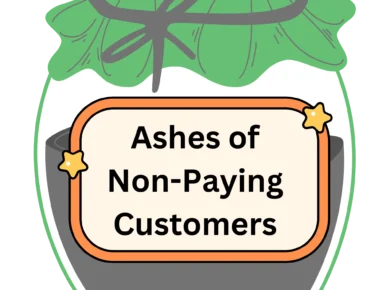In the dynamic world of freelance work, where digital nomads and home-based entrepreneurs thrive, exchanging services for money is crucial. However, this transaction, seemingly simple, can become complex as freelancers compete to receive the payment in the most efficient, cost-effective, and secure manner possible.
The right payment gateway and method can streamline the process and enhance the freelancer-client relationship. This blog article explores the top payment gateways and methods tailored to the modern freelancer’s needs.
Factors to Consider
When selecting a payment gateway or method, you must consider several factors to align with your business objectives and client preferences.
Transaction Fees
When selecting a payment gateway, it’s crucial to consider the transaction fees, as they can significantly affect your income, especially with small or frequent transactions. These fees, often a mix of a percentage and a fixed fee per transaction, can quickly eat into your earnings. This impact is twofold: it reduces your immediate income and complicates your pricing strategy, necessitating adjustments in your rates to cover these costs.
The variety in fee structures across payment gateways adds another layer of complexity, making it challenging to choose the most cost-effective option. Some gateways might offer lower fees for higher transaction volumes or more favorable terms for international transactions, which are vital considerations if your client base is global. Additionally, the method of payment withdrawal can attract different fees, influencing your choice of gateway.
Currency Conversion
When you’re engaged in international work, the importance of closely monitoring the currency conversion practices of your chosen payment method cannot be overstated. High conversion rates can considerably diminish your earnings, primarily because these rates often encompass hidden fees that aren’t initially obvious. As a result, it’s vital to seek out payment services that are transparent about their currency conversion rates and offer competitive pricing.
Bear in mind that some payment gateways might provide more advantageous rates than their competitors or have established partnerships with financial institutions to secure better conversion terms for their users. This can be particularly beneficial for you as it ensures that a more significant portion of your international payments remains intact after conversion.
To protect your income from being eroded by unfavorable conversion rates, take the time to thoroughly research and compare the currency conversion practices of different payment services. Look for those that explicitly state their conversion fees, offer a breakdown of any additional charges, and have a reputation for fairness in their currency exchange operations.
Security
When navigating the world of online transactions, prioritizing the security of your financial information is critical. It’s essential to choose a payment method that meets and exceeds industry security standards. Look for certifications like PCI-DSS compliance, which indicates that the platform adheres to stringent security measures to protect card information. Additionally, ensure that the payment service employs robust security practices, such as end-to-end encryption, to safeguard your data during transactions.
It’s also wise to verify that the payment gateway implements two-factor authentication (2FA) for an added layer of security, significantly reducing the risk of unauthorized access to your account. Be vigilant about the platform’s policies on monitoring transactions and their capabilities to detect and prevent fraudulent activity. A reputable payment service will have a dedicated team to monitor suspicious activity and tools to alert you of any unusual transactions.
Ease of Use
Ensuring that the payment process is as convenient and intuitive as possible is crucial for maintaining and enhancing your client relationships. When you select a payment method, prioritize those known for their user-friendly interfaces and straightforward transaction processes. A seamless payment experience can significantly contribute to client satisfaction, making them more likely to return for your services and recommend you to others.
Look for payment platforms offering features like easy invoice creation, the ability to set up recurring payments for ongoing projects, and straightforward navigation for you and your clients. The less time and effort your clients spend figuring out how to pay you, the better their overall experience will be. Additionally, consider payment methods that provide multiple payment options (credit cards, bank transfers, online wallets) to accommodate the diverse preferences of your clients.
Also, responsiveness is critical. Choose a service that offers reliable customer support for both you and your clients. In the event of any payment issues, quick and effective support can prevent frustration and maintain trust in your professional relationship.
Payment Solutions for Freelancers
PayPal

As a freelancer, choosing PayPal as your payment gateway offers a blend of convenience, global reach, and features designed to facilitate easy transactions. PayPal is renowned for its user-friendly interface, allowing you to send invoices, receive payments from clients across the globe, and access your funds with relative ease. Its integration capabilities with various e-commerce platforms and accounting software streamline the financial aspects of your freelance business, making it easier to manage invoices, payments, and records in one place.
Pros:
- Widespread Acceptance: PayPal’s extensive user base and global recognition mean many clients are familiar with and comfortable using it, potentially speeding up the payment process.
- Ease of Use: With a straightforward interface, PayPal makes sending invoices and managing payments simple, even for those not deeply versed in financial software.
- Buyer and Seller Protection: PayPal offers protection programs that can help resolve disputes and prevent fraudulent transactions, offering a layer of security for your freelance business.
Cons:
- Fees: PayPal’s transaction fees, especially for international payments and currency conversions, can be high. This could impact your net earnings, particularly on smaller projects or where you absorb the fees instead of passing them on to clients.
- Account Limitations: PayPal is known to place holds or limitations on accounts with little notice. Resolving these issues can be time-consuming and may temporarily restrict your access to funds.
In summary, PayPal offers a convenient and reliable payment solution for freelancers, fostering trust and ease of use for both you and your clients. However, it’s important to be mindful of the fees and potential for account limitations, weighing these factors against the benefits to ensure PayPal is the right choice for your freelance payment needs.
Stripe
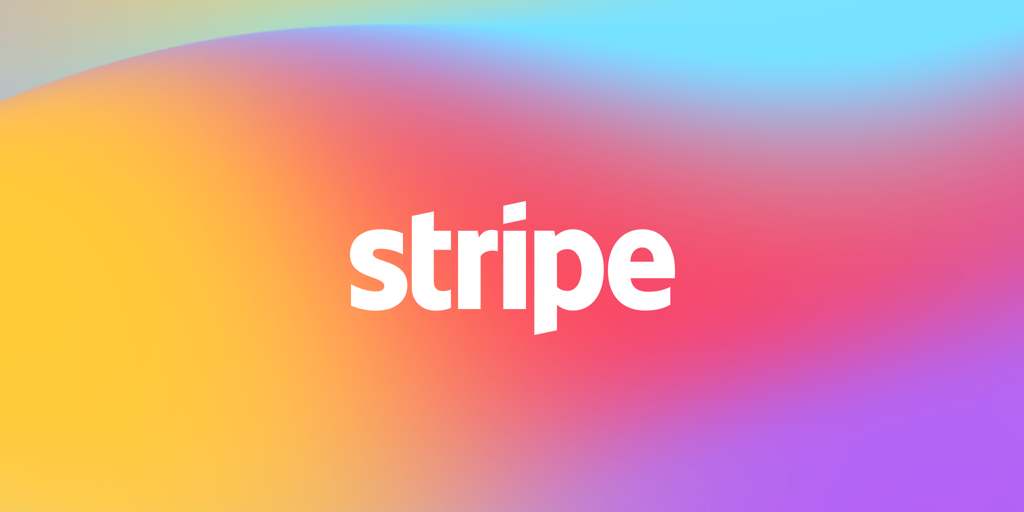
Integrating Stripe as your payment gateway can significantly enhance the way you manage and receive payments for your services. Stripe stands out for its robust API, allowing for a highly customizable payment experience that can be tailored to fit the unique needs of your freelance business. This platform supports a wide range of payment methods, including credit cards, bank transfers, and even cryptocurrencies, ensuring you can cater to a diverse client base. Setting up recurring payments is particularly beneficial for ongoing projects, providing a seamless billing cycle that saves time and effort.
Pros:
- Customization and Flexibility: Stripe’s powerful API and extensive documentation enable you to create a payment process perfectly aligned with your business model, offering a seamless experience for your clients.
- Global Reach: With support for over 135 currencies and payment methods worldwide, Stripe opens your freelance business to a global audience, removing barriers to entry in international markets.
- Security: Stripe emphasizes security, employing best practices like encryption and tokenization to protect sensitive information, giving you and your clients peace of mind.
Cons:
- Technical Complexity: The very feature that makes Stripe so powerful—its API—can also be a barrier for freelancers without technical expertise or access to developer resources. Setting up and customizing Stripe might require a steeper learning curve or additional investment in development support.
- Fees: While Stripe’s fees are competitive, they can accumulate, especially with additional charges for international payments and currency conversion. It’s important to consider how these fees impact your bottom line.
Stripe is an excellent choice for freelancers who value flexibility and are looking for a scalable, secure payment solution to serve clients globally. However, it’s crucial to weigh the benefits against the potential need for technical assistance and the fee structure to ensure it aligns with your freelance business needs.
Wise
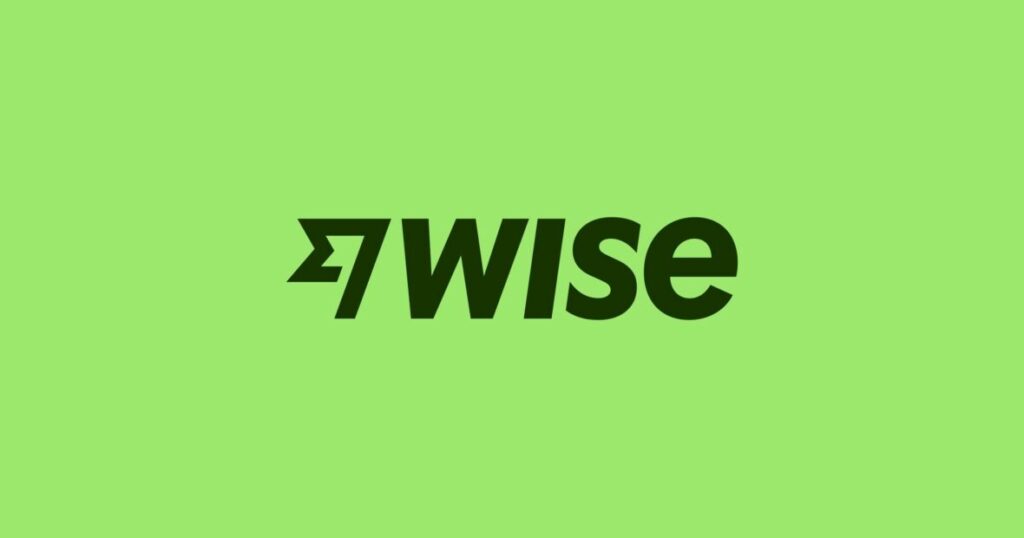
Choosing TransferWise (now known as Wise) for your payment gateway can be a game-changer, especially if you work with international clients. Wise is celebrated for its transparent fee structure and accurate exchange rates, which can result in significant savings on international transactions. When you invoice clients or receive payments, Wise converts the currency using the mid-market rate without the hidden fees often added by traditional banks. Additionally, the Wise account allows you to hold and manage money in over 50 currencies, offering a flexible solution for freelancers who operate globally.
Pros:
- Cost-Effective Transfers: Wise uses accurate exchange rates and discloses all fees upfront, making it one of the most affordable options for international money transfers.
- Multi-Currency Accounts: The ability to hold, manage, and convert money in multiple currencies is invaluable for freelancers with a diverse international client base, simplifying financial management across borders.
- Ease of Use: Setting up and using a Wise account is straightforward, with a user-friendly interface that simplifies managing transactions and currencies.
Cons:
- Limited Functionality for Domestic Payments: While Wise excels in international transactions, it might not offer as many features for domestic payments as other gateways, which could be a limitation for freelancers primarily serving clients in their home country.
In essence, Wise is an excellent choice for freelancers engaged in international work, offering cost savings and financial flexibility that can significantly benefit your freelance business.
Payoneer
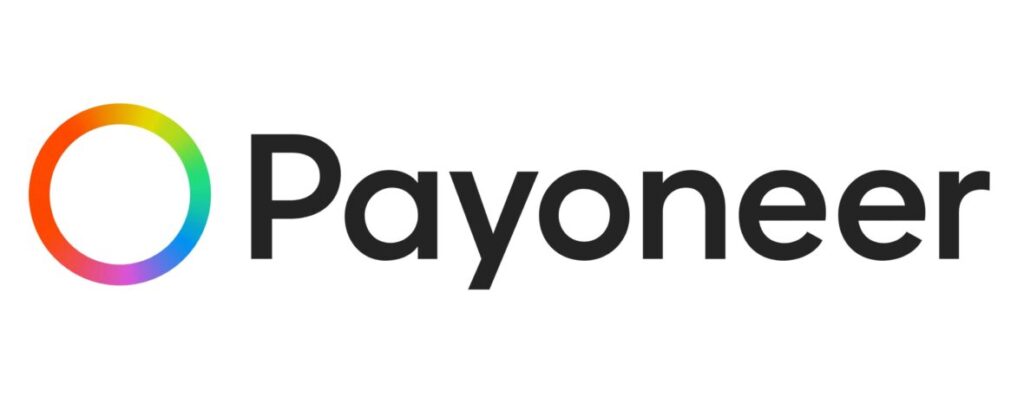
Leveraging Payoneer as your payment gateway equips you with a robust platform designed to ease international transactions. Payoneer specializes in providing freelancers, online sellers, and businesses the ability to receive payments from clients and marketplaces globally. With its own Prepaid Mastercard, Payoneer allows you to access your funds directly from ATMs or use them for online purchases, enhancing flexibility in managing and spending your earnings. The platform supports multiple currencies, making it easier to invoice clients in their local currency and withdraw funds in yours, minimizing conversion fees.
Pros:
- Global Reach: Payoneer’s extensive network makes it possible to receive payments from clients in over 200 countries and territories in more than 150 currencies.
- Direct Withdrawals: The ability to withdraw funds directly to your local bank account or via the Payoneer Prepaid Mastercard provides convenience and quick access to your money.
- Dedicated Support: Payoneer offers customer support in multiple languages, which is invaluable for resolving any issues or queries you may encounter.
Cons:
- Fees: While Payoneer provides a seamless way to receive international payments, it does come with its share of costs, including annual card maintenance fees, withdrawal fees, and, in some cases, high currency conversion fees.
- Minimum Payment Threshold: Some freelancers might find the minimum payment threshold for withdrawals to be a limitation, especially if they typically deal with smaller transactions.
In summary, Payoneer offers a comprehensive solution for freelancers dealing with international clients, providing a convenient way to manage and access your earnings globally. However, it’s important to be mindful of the associated fees and ensure that the benefits align with your specific needs and the scale of your freelance business.
Square

Choosing Square as your payment gateway can significantly streamline how you accept payments, particularly if you offer services both online and in person. Square is renowned for its versatility, providing a comprehensive suite of tools, including online payment processing, point-of-sale (POS) systems, and hardware for in-person transactions. This makes it ideal for freelancers who diversify their revenue streams through digital services and physical sales or consultations. Square’s straightforward pricing, with a transparent fee structure for transactions, and its ability to accept a wide variety of payment methods enhance its appeal, ensuring you can cater to the preferences of a broad client base.
Pros:
- Versatility: Square supports various payment types, making it suitable for freelancers who operate in multiple contexts, from online consulting to selling products at events.
- Ease of Use: With intuitive setup and operation, Square simplifies the payment process for you and your clients, enhancing the overall client experience.
- Integrated Tools: Beyond payments, Square offers additional business tools, including invoicing, appointment scheduling, and inventory management, all integrated into one platform.
Cons:
- Fees for In-person and Online Transactions: While Square’s fees are competitive, they can add up, especially for transactions processed online or via manual entry, which have higher rates than swipe or chip transactions.
- Dependence on Internet Connection: A stable internet connection is crucial for in-person transactions using Square’s hardware, which could be a limitation in areas with poor connectivity.
In summary, Square offers a robust and flexible payment solution for freelancers, especially those who value a seamless integration of online and offline payment methods. However, it’s important to consider how the fee structure and the need for internet connectivity align with your specific business model and operational environment.
QuickBooks Payments

Adopting QuickBooks Payments as your payment gateway can significantly enhance the efficiency of your financial management. This platform is seamlessly integrated with QuickBooks, a leading accounting software, making it an ideal choice if you already use QuickBooks for your bookkeeping needs. With QuickBooks Payments, you can accept credit card payments, ACH transfers, and even PayPal payments directly through invoices you send to clients, streamlining the payment process and ensuring quick access to your funds. This integration simplifies your accounting tasks by automatically updating your books every time you receive a payment, saving you time and reducing the likelihood of errors.
Pros:
- Seamless Integration: QuickBooks Payments integrates directly with QuickBooks accounting software, ensuring that your financial records are automatically updated with each transaction, simplifying bookkeeping and financial tracking.
- Diverse Payment Options: The ability to accept a wide range of payment methods makes it easier for your clients to pay most conveniently, potentially speeding up the payment process.
- Automated Invoicing: You can automate the invoicing process, saving time and providing a professional experience for your clients.
Cons:
- Fees: QuickBooks Payments charges transaction fees, which vary depending on the payment method. While competitive, these fees can add up, especially for freelancers with a high volume of transactions.
- Dependence on QuickBooks: If you’re not already using QuickBooks for your accounting, adopting QuickBooks Payments means you’ll likely need to integrate QuickBooks into your business operations, which could represent an additional cost and learning curve.
QuickBooks Payments is a powerful solution for freelancers looking for a streamlined way to manage invoicing and payments alongside their accounting practices. It offers the convenience of automatically recording and reconciling financial transactions in your accounting software, saving you considerable time and effort. However, it’s important to assess whether the benefits of integrated accounting and payment processing outweigh the costs associated with transaction fees and potentially adopting a new accounting system.
Skrill: The Diverse Wallet
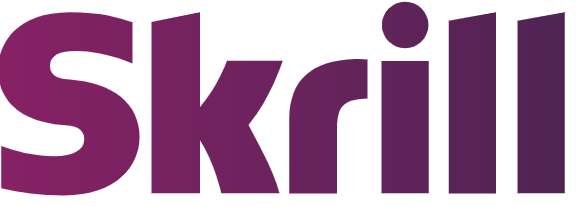
Using Skrill as your payment gateway can offer you a straightforward and efficient way to manage both domestic and international transactions. Skrill is known for its ease of use, allowing you to send and receive payments with just an email address. This platform supports a wide range of currencies and payment methods, making it an attractive option for freelancers working with a global client base. With Skrill, you can also benefit from instant transfers to and from other Skrill accounts, a handy feature for quick payments.
Pros:
- Global Reach: Skrill supports a vast array of currencies and offers localized payment options, making it easier for you to engage with clients from different countries without worrying about currency conversion.
- Low Transaction Fees for Skrill to Skrill Transfers: If both you and your client use Skrill, the cost of sending and receiving money can be lower compared to other platforms, which is advantageous for frequent transactions.
- User-Friendly Interface: Skrill’s platform is designed to be intuitive, ensuring you can manage your transactions easily without a steep learning curve.
Cons:
- Higher Fees for Currency Conversion: While Skrill offers competitive fees for transactions within its network, currency conversion rates can be high, which might reduce your earnings from international clients.
- Withdrawal Fees: Skrill charges fees for withdrawing funds to your bank account or credit card, which could impact your overall income, especially if you make frequent withdrawals.
- Account Verification Process: Some users find Skrill’s account verification process lengthy and cumbersome, which could delay your ability to use the service immediately.
In summary, Skrill presents a convenient and flexible payment solution for freelancers, especially those with an international clientele. Its easy-to-use interface and support for multiple currencies can simplify the payment process, making it easier to receive payments from abroad. However, it’s important to be mindful of the higher fees associated with currency conversion and withdrawals and the potential complexities of the account verification process.
Zelle
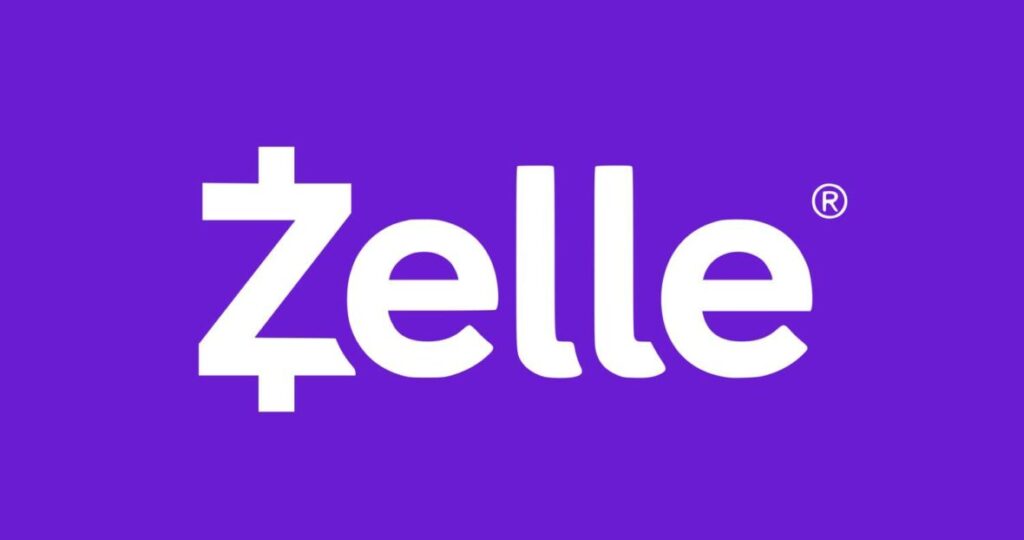
Using Zelle as your payment gateway could streamline how you receive payments, especially if you and your clients are based in the U.S. Zelle stands out for its simplicity and speed, enabling you to receive payments directly into your bank account within minutes. This service is integrated into the online banking systems of many major U.S. banks, making it accessible without needing to sign up for a separate account if you bank with one of these institutions. This direct-to-bank approach can particularly appeal to freelancers seeking a straightforward, no-frills payment management method.
Pros:
- Speed: Zelle transfers are typically completed within minutes, which is ideal for freelancers who need to access their funds quickly.
- No Fees: Using Zelle, sending and receiving money is generally free, which can be a significant advantage over other payment gateways that charge transaction or service fees.
- Ease of Use: Given its integration with many U.S. banks, Zelle offers a user-friendly experience, allowing you to send and receive payments through your existing bank’s app or website without the need for a separate app.
Cons:
- Limited to the U.S.: Zelle is only available between U.S. bank accounts, which means it’s unsuitable for freelancers with international clients.
- No Payment Protection: Unlike some other payment platforms, Zelle does not offer protection for services or goods sold. If there’s a dispute, you might not have the same level of protection or recourse as with other payment methods.
- Dependency on Banking Institutions: Since Zelle works through participating banks, both you and your client need to have bank accounts with participating institutions to use the service effectively.
In essence, Zelle can be an excellent payment gateway for freelancers who prioritize speed and convenience and primarily deal with clients within the U.S. Its integration into existing banking apps and websites makes it exceptionally user-friendly. However, the lack of international support and payment protection are significant considerations to bear in mind, particularly if your freelance work extends beyond U.S. borders or if you’re concerned about the security of your transactions.
Venmo

Venmo is a mobile payment service owned by PayPal, designed for easy peer-to-peer transactions. It allows users to send and receive money through a mobile app, making it a popular choice for freelancers who need a quick and straightforward way to manage payments. Venmo’s social features enable users to share and track transactions with friends, adding a unique social element to payment processing.
Pros:
- Convenient for Quick Payments: Venmo is excellent for freelancers who need to receive payments quickly and efficiently.
- No Fees for Basic Transactions: Sending and receiving money using a bank account, debit card, or Venmo balance incurs no fees.
- Instant Transfers Available: Users can instantly transfer funds to their bank account for a small fee.
- User-Friendly App: The intuitive interface makes it easy to manage payments on the go.
Cons:
- Limited to U.S. Users: Venmo is currently only available to users in the United States.
- Not Ideal for Large Transactions: Venmo has transaction limits that might not be suitable for high-value transactions.
- Primarily for Personal Use: While Venmo is expanding its business features, it is designed mainly for personal transactions and may not be ideal for all business needs.
- Social Feed May Be Unnecessary: Some users may find the social sharing aspect unnecessary or intrusive for professional transactions.
Venmo is a convenient and user-friendly payment solution for freelancers in the U.S. who need to manage small to medium-sized transactions quickly. Its ease of use and instant transfer capabilities make it a popular choice, though it may not be suitable for all business needs or large transactions.
2Checkout

2Checkout, now part of Verifone, is a global payment processing service that provides a comprehensive solution for freelancers and businesses to accept online payments. It supports a wide range of payment methods and currencies and offers features like recurring billing and detailed analytics. With a focus on secure and flexible payment options, 2Checkout is designed to meet the diverse needs of freelancers working with international clients.
Pros:
- Wide Range of Payment Options: Freelancers can accept various payment methods, increasing client flexibility.
- International Support: Ideal for freelancers working with clients worldwide, thanks to multi-currency and localized payment options.
- Recurring Billing: Simplifies subscription management for ongoing services.
- Detailed Analytics: Offers comprehensive reporting tools to monitor financial performance and manage payments.
- Strong Security: Protects transactions with robust security measures.
Cons:
- Transaction Fees: Fees can be relatively high, particularly for international transactions.
- Complex Setup: Setting up 2Checkout can be complex and may require technical knowledge.
- Customer Support: Some users report that customer support can be slow to respond.
2Checkout (now Verifone) is a powerful and flexible payment gateway suited for freelancers who need to accept various payment methods and work with international clients. Its comprehensive features, including recurring billing and detailed analytics, make it a robust solution, though the setup can be complex, and the fees may be higher compared to other options.
Authorize.Net
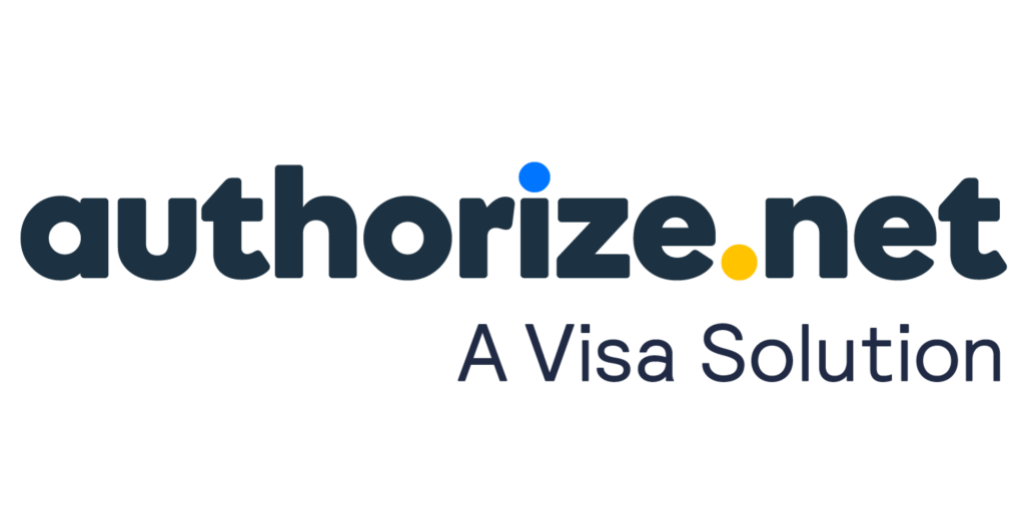
Authorize.Net is a reliable and secure payment gateway service that provides a wide range of payment processing solutions, including online payments, recurring billing, and invoicing. Known for its robust security measures and excellent customer support, Authorize.Net is suitable for freelancers who need a dependable platform to manage their payments. It supports various payment methods, making it flexible for freelancers and their clients.
Pros:
- High-Level Security: Advanced fraud detection and PCI compliance ensure secure transactions.
- Variety of Payment Options: Supports multiple payment methods, including digital wallets.
- Excellent Customer Support: Known for responsive and helpful customer support.
- Recurring Billing and Invoicing: Comprehensive tools for managing subscriptions and invoicing clients.
- Detailed Analytics: Offers extensive reporting features to track payments and financial performance.
Cons:
- Monthly Fees and Setup Costs: Monthly fees and potential setup costs can be a barrier for freelancers with lower volumes.
- Complex Setup: The initial setup process can be complex, especially for those without technical expertise.
- Transaction Fees: Transaction fees may be higher compared to some other payment gateways.
- Limited International Support: While it supports international transactions, its features and support are more focused on the U.S. market.
Authorize.Net is a robust and secure payment gateway that provides various features suitable for freelancers, including multiple payment methods, recurring billing, and detailed invoicing tools. Its high-level security and excellent customer support make it a reliable choice, though the setup can be complex, and the fees might be higher compared to other solutions. It is particularly well-suited for freelancers who need a comprehensive and secure payment processing solution.
Google Pay
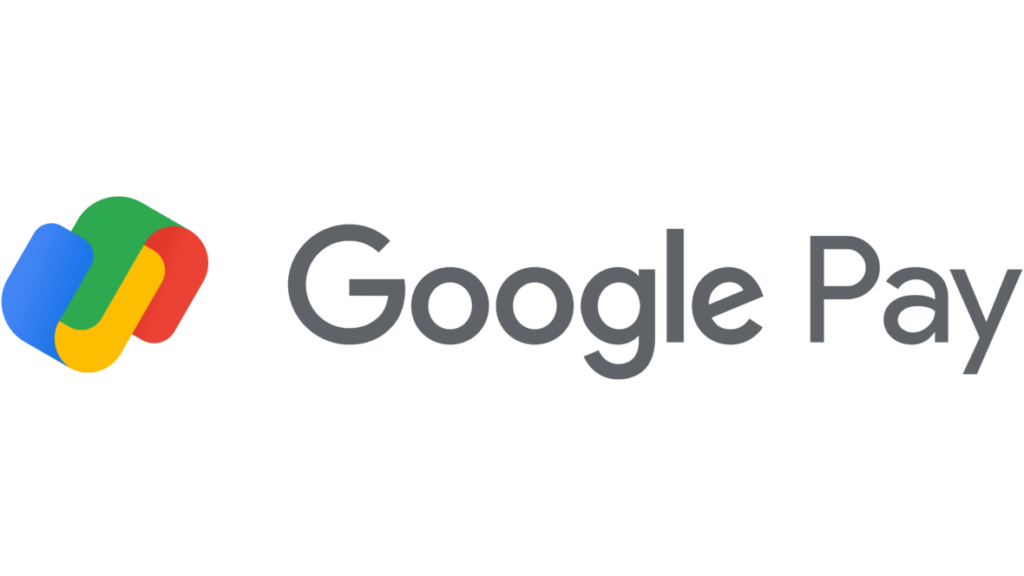
Google Pay is a digital wallet and online payment system developed by Google. It allows freelancers to receive payments quickly and securely through a user-friendly platform. Integrated with various Google services, Google Pay is convenient for freelancers already using the Google ecosystem. It supports multiple payment methods and provides high-level security, making it a reliable transaction management option.
Pros:
- User-Friendly Interface: Easy to set up and navigate, making it accessible for freelancers.
- No Fees for Receiving Payments: Unlike other payment gateways, Google Pay does not charge payment fees.
- High-Level Security: Advanced security features ensure safe transactions.
- Quick Transfers: Instant transfer options for immediate access to funds.
- Integration with Google Ecosystem: Convenient for users already using Google services.
Cons:
- Limited Availability: Currently limited to certain countries, which may not be suitable for freelancers with international clients.
- Not Widely Used for Business Transactions: Primarily designed for personal use, which may limit its functionality for business needs.
- Client Requirements: Clients need a Google account to make payments, which could be a barrier for some.
Google Pay is a convenient and secure payment solution for freelancers, especially those who are integrated into the Google ecosystem. It offers a user-friendly interface, high-level security, and quick transfers with no fees for receiving payments. However, its limited availability and focus on personal use may not meet the needs of all freelancers, particularly those working with international clients or requiring more advanced business features.
Direct Payment Methods
Bank Transfers

As a freelancer, you might find traditional bank transfers a solid choice for receiving payments, especially from long-term and trusted clients. This method, rooted in simplicity and reliability, allows for the direct transfer of funds from your client’s bank account to yours without the intermediaries many modern payment gateways use. Despite the absence of advanced features, the straightforward nature of bank transfers can be particularly appealing for high-value transactions where both parties seek to minimize fees and complications.
The cost-effectiveness of bank transfers is one of their most significant advantages. Typically, these transactions incur lower fees than other payment methods, especially when dealing with large sums of money. This can result in substantial savings over time, both for you and your clients, making bank transfers an attractive option for sustaining profitable and ongoing business relationships.
However, it’s important to consider the slower processing times associated with bank transfers, which can vary depending on the banks involved and the countries in which they operate.
Moreover, conducting transactions through bank transfers requires a level of trust, as it involves sharing bank account details. For this reason, bank transfers tend to be more common in established professional relationships where both parties have a history of successful exchanges.
In essence, traditional bank transfers can be an excellent choice if you’re looking for a cost-effective, reliable payment method for high-value projects, especially with clients you’ve built a trusting relationship with. They offer a straightforward way to manage your finances without the extra fees or complexities that can come with other payment solutions.
Checks
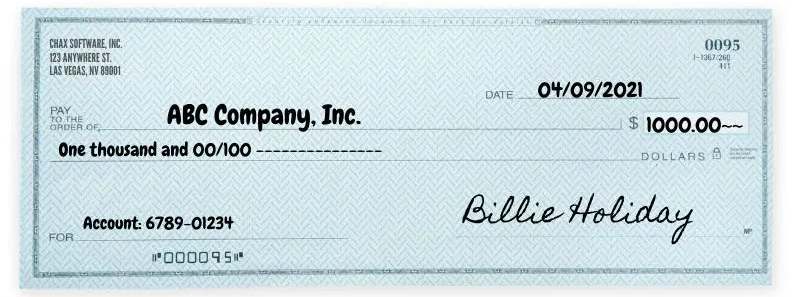
As a freelancer, you might find yourself in situations where traditional payment methods, such as paper checks, are still in use, particularly in regions or industries where digital payment solutions have yet to become the norm. While the idea of using paper checks may seem archaic in the digital age, they offer a level of security and provide a tangible financial trail that can be beneficial for both accounting purposes and tax documentation.
Receiving payment via check allows you to have a physical record of the transaction, which can be helpful when it comes time to reconcile your accounts or if any disputes arise regarding payment. This paper trail creates an audit-friendly record of your income, offering clear evidence of payments received over time.
Furthermore, for some clients, especially those in more traditional sectors or older generations, writing a check may be their preferred payment method. It’s a practice they trust and understand, and accommodating these clients can help you maintain good business relationships.
However, it’s essential to be mindful of the downsides. The process of depositing checks can be slower than electronic transfers, as it requires physically going to the bank or using a mobile deposit feature, if available. There’s also the risk of checks getting lost in the mail or bouncing due to insufficient funds in the issuer’s account, leading to delays in receiving your payment and potential banking fees.
In essence, while accepting checks as a freelancer may not offer the immediacy and convenience of digital payments, they provide a secure and documented method of transaction that can be advantageous for maintaining detailed financial records. Being open to this payment method can also expand your client base to include those who prefer or require the use of checks for business transactions.
Cash App

As a freelancer navigating the modern, cashless transaction landscape, embracing mobile payment technologies like Cash App from Square can significantly streamline how you receive payments. Cash App offers a direct, mobile-friendly platform that enables you to receive money instantly from clients, making it an ideal solution for freelancers who value speed and convenience in their financial transactions.
The simplicity of Cash App is one of its most significant advantages. With just a few taps on your smartphone, you can request and receive payments, bypassing the need for traditional banking details or lengthy transfer processes. This ease of use is particularly beneficial in a freelance setting, where managing multiple clients and projects efficiently is crucial.
Moreover, Cash App fits seamlessly into the growing preference for cashless transactions, catering to clients accustomed to using their smartphones for nearly every aspect of their lives, including financial transactions. The app also offers features like the Cash Card, a customizable debit card linked to your Cash App balance, which you can use for purchases or ATM withdrawals, further enhancing its utility.
However, you must consider the limitations and fees associated with Cash App transactions. While receiving money via Cash App is generally straightforward, there may be fees for instant transfers to your bank account, and there are limits on the amounts you can send and receive without verifying your identity.
In essence, Cash App represents a modern solution for freelancers looking to simplify the payment process. Its instant payment feature, coupled with the ease of use and integration into a cashless society, makes it a compelling choice for freelancers keen on optimizing their financial operations. However, staying informed about transaction limits and fees is important to ensure it meets your freelancing needs effectively.
Integration with Freelancing Platforms
As a freelancer, using platforms like Upwork, Fiverr, and Freelancer.com can be a cornerstone of your client acquisition strategy. These platforms connect you with clients from all over the world and provide a structured environment for managing projects, communicating with clients, and, crucially, handling payments. Integrating your chosen payment method with these freelance marketplaces is essential for ensuring a seamless payment experience for you and your clients.
Using a payment method that integrates smoothly with these platforms means that you can easily withdraw your earnings without unnecessary delays or complications. This is particularly important given the diverse nature of the freelance work available on these sites, from short-term gigs to long-term projects. Seamless integration ensures that the transfer of funds from the platform to your bank account or digital wallet is straightforward, allowing you to access your earnings promptly.
Moreover, platforms like Upwork, Fiverr, and Freelancer.com often have their own systems for invoicing, payment protection, and dispute resolution. A payment method that works well with these systems can provide additional security for your transactions, ensuring you are paid for the work you’ve completed according to the agreed-upon terms. This integration can also facilitate smoother communication with clients about payments, as all parties can easily track the status of transactions within the platform.
However, it’s worth noting that each platform may have specific requirements or preferences for payment methods, and some may charge fees for withdrawals to certain types of accounts or services. As a freelancer, you should familiarize yourself with these details to choose the most efficient and cost-effective payment method for your situation.
Upwork Escrow

Upwork Escrow is an in-built payment protection system designed to secure the interests of both freelancers and clients. When you engage in a project, the client funds the escrow, which means the payment for your work is secured before you even start. This system holds the funds until the project milestones are completed to your client’s satisfaction, providing a layer of security that’s invaluable in the freelance world.
For you, the freelancer, Upwork Escrow offers peace of mind. You can proceed with your work, knowing that the payment has already been allocated and will be released when you successfully complete the project or milestone. This minimizes the risk of non-payment and disputes over delivery versus payment, as both parties have agreed to the terms, and the funds are held by a neutral third party—Upwork.
However, it’s essential to communicate clearly and effectively with your client throughout the project to ensure that you meet his expectations and that any deliverables are approved. Upwork’s system facilitates this communication, providing a structured platform for submitting work, requesting revisions, and ensuring you and your client are on the same page.
While the escrow system adds a layer of security, it also requires you to be thorough in understanding and agreeing to the project terms before beginning work. Ensure that the scope of work, milestones, and payment terms are clearly defined and agreed upon to avoid any confusion or disputes down the line.
In summary, Upwork Escrow is a powerful tool in your freelancing arsenal on the platform. It secures your payment, provides a structured process for project completion and approval, and helps build trust with your clients by ensuring that financial commitments are met. As you navigate your freelance career on Upwork, leveraging the escrow system effectively can help you focus on delivering great work, secure in the knowledge that your payment is protected.
Fiverr Revenue Card
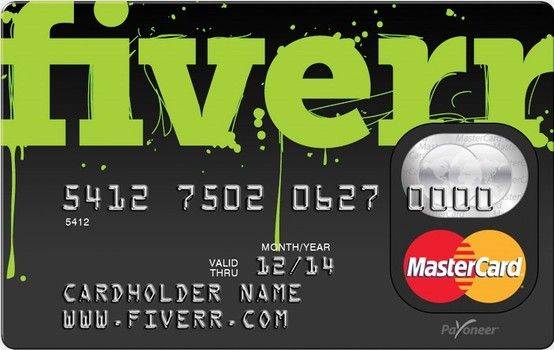
As a freelancer on Fiverr, managing your earnings efficiently is paramount to maintaining the smooth operation of your services. Enter the Fiverr Revenue Card, an exclusive offering from Fiverr in partnership with Payoneer, explicitly designed to streamline the withdrawal process for freelancers. This card functions as a direct link to your Fiverr earnings, enabling you to withdraw your revenue quickly and conveniently without the delays and often cumbersome procedures associated with traditional bank transfers.
The Fiverr Revenue Card stands out for its ease of use and integration within the Fiverr ecosystem. Once your funds are available for withdrawal on Fiverr, you can transfer them directly to your Revenue Card with just a few clicks. The card then acts like a regular debit card; you can use it to make purchases anywhere that accepts MasterCard or withdraw cash from ATMs worldwide, providing you with immediate access to your hard-earned money.
One of the key benefits of the Fiverr Revenue Card is its speed. Traditional bank transfers can take several days to process, but with the Revenue Card, the wait time for accessing your funds is significantly reduced.
However, knowing the fees associated with using the Fiverr Revenue Card is important. While it offers convenience and speed, there are costs for transactions, ATM withdrawals, and potentially currency conversion, depending on your location and currency. These fees can add up, so it’s wise to review them carefully to ensure that the convenience of the card aligns with your financial management strategy.
The Fiverr Revenue Card provides a practical and efficient solution for accessing your Fiverr earnings. Its integration with the Fiverr platform and its flexibility makes it an attractive option for freelancers keen on managing their finances with ease.
Freelancer.com Milestone Payments

Understanding and utilizing the Milestone Payments system can significantly enhance the security and predictability of your income. Similar to Upwork’s Escrow, Freelancer.com’s Milestone Payments act as a safeguard, ensuring the client securely deposits funds for your project before you commence work. This system is designed to provide both you and your client with confidence and assurance throughout the project lifecycle.
When you agree to a project, your client deposits funds into a Milestone Payment, which Freelancer.com holds. These funds are not released to you until you’ve completed specified segments of the project or the entire project itself, according to the agreement between you and your client. This setup ensures that you have a guaranteed payment waiting upon successful completion of your work, mitigating the risk of non-payment and enhancing trust between you and your clients.
The Milestone Payments system encourages clear communication and detailed project planning. For optimal use, you and your client should agree on specific milestones that are realistic, measurable, and aligned with the project’s objectives. Each milestone serves as a goalpost for payment, providing a structured framework for project progress and financial transactions.
However, while Milestone Payments offer security and peace of mind, they also require you to be diligent in defining and agreeing upon the project scope and milestones beforehand. Ensuring that each milestone is clearly documented and agreed upon can prevent misunderstandings and disputes, facilitating a smoother project flow and financial transaction process.
It’s also important to note that, in the event of a dispute, Freelancer.com provides a dispute resolution service to help both parties reach a satisfactory conclusion. However, resolving any issues directly with your client is always best.
In summary, Freelancer.com’s Milestone Payments system is a valuable tool for managing financial risk and ensuring payment security. By effectively leveraging this system, you can focus more on delivering high-quality work instead of worrying about the reliability of your income, knowing that your earnings are protected at each step of the project.
Tips for Choosing the Right Payment Method
Navigating the plethora of payment solutions available today can be overwhelming. The right choice impacts how you receive payments and your relationship with clients and your overall business workflow. To help you make an informed decision, here are some practical tips for selecting the most suitable payment method for your freelance business:
- Understand Your Clients’ Preferences: Consider the payment methods your clients are most comfortable and familiar with. Aligning with their preferences can enhance their satisfaction and encourage prompt payments. If your client base is diverse, you might need a flexible solution that accommodates various payment methods.
- Evaluate Speed and Reliability: The punctuality of receiving payments is crucial for maintaining healthy cash flow. Look for payment solutions known for their reliability and swift processing times. Delays in payments can hinder your financial planning and affect your ability to manage business expenses.
- Review Customer Service and Support: Opt for a payment provider that offers excellent customer service and support. Quick and practical help resolving transaction issues is invaluable, ensuring minor problems don’t escalate into more significant concerns that could disrupt your business operations.
- Factor in Fees and Costs: Different payment methods come with varying fee structures, including transaction fees, currency conversion fees, and withdrawal fees. Analyze these costs comprehensively to ensure you choose a cost-effective option that won’t unnecessarily erode your earnings.
- Consider Global Accessibility: If your clientele is international, it’s vital to select a payment method that’s globally accepted and capable of handling multiple currencies. This will help you cater to clients from various regions without facing significant barriers or exorbitant fees.
- Assess Integration with Other Tools: The ability of a payment method to integrate with your existing business tools, such as accounting software, project management apps, and invoicing systems, can significantly streamline your administrative tasks, saving you time and reducing the potential for errors.
- Think About Security: Prioritize payment methods that offer robust security measures to protect your and your client’s financial information. This includes encryption, fraud protection, and secure data handling practices to prevent unauthorized access and financial loss.
- Check for Payment Flexibility: A versatile payment solution that supports various payment options, from bank transfers and credit cards to online wallets, can make your services accessible to a wider audience. Features like recurring payments, invoicing capabilities, and easy withdrawal options add to the convenience.
- Consider the Payment Experience: A seamless and intuitive payment process enhances the client experience, potentially leading to repeat business and referrals. Choose a method that is straightforward for both you and your clients, with minimal hurdles to complete transactions.
- Plan for the Future: Opt for a scalable payment solution that can grow with your business. As your client base expands or as you explore new markets, your chosen payment method should be able to accommodate these changes without requiring a significant overhaul of your payment processes.
By considering these tips, you can sift through the myriad of payment options and select one that best suits your freelance business’s unique needs, ensuring smooth transactions and satisfied clients.
Conclusion
The world of freelancing is ripe with opportunities, and a suitable payment method can act as a catalyst for growth and success. Whether you’re a seasoned freelancer or just starting, assessing the gateways and methods available is key to fostering a well-oiled payment system that supports your business operations.
Dive into the solutions presented above with a clear understanding of your business needs, and emerge with a payment process that doesn’t just work—it thrives. It’s not just about getting paid; it’s about how you get paid and the efficiency and professionalism that govern your transactions in the exciting, rewarding world of freelance work.

